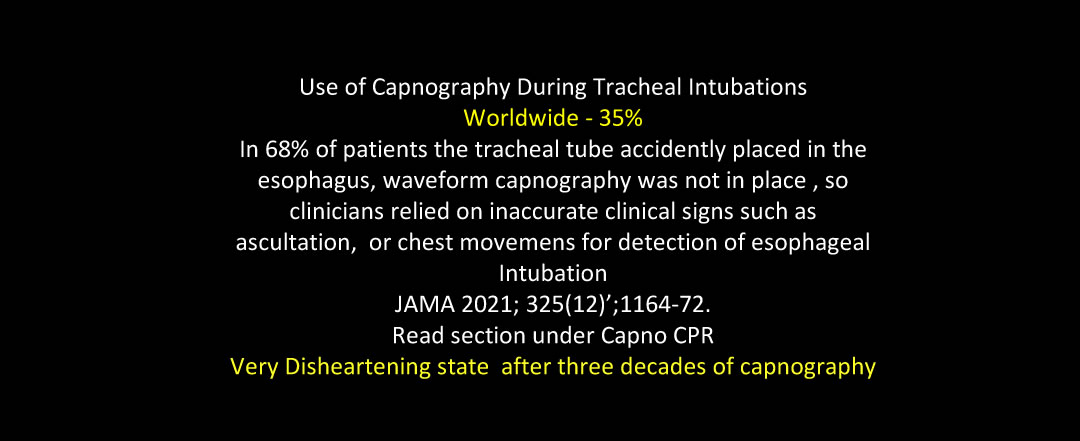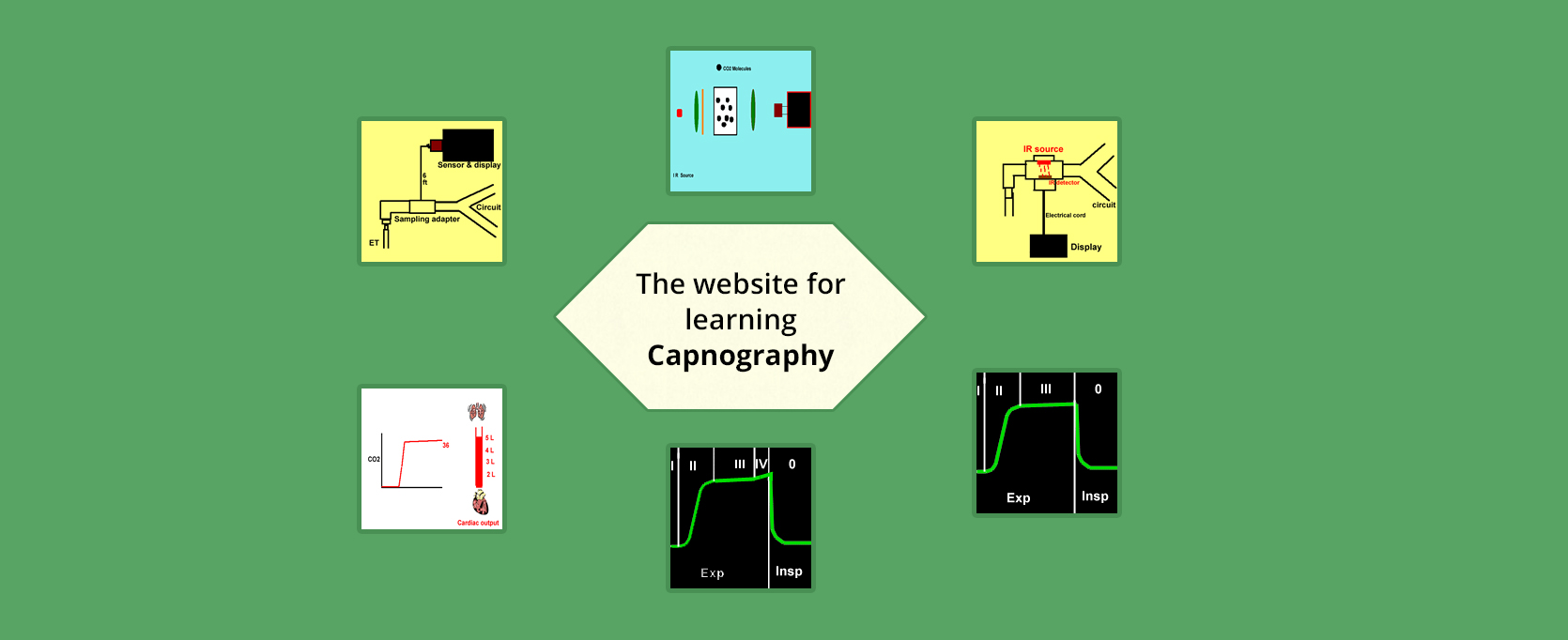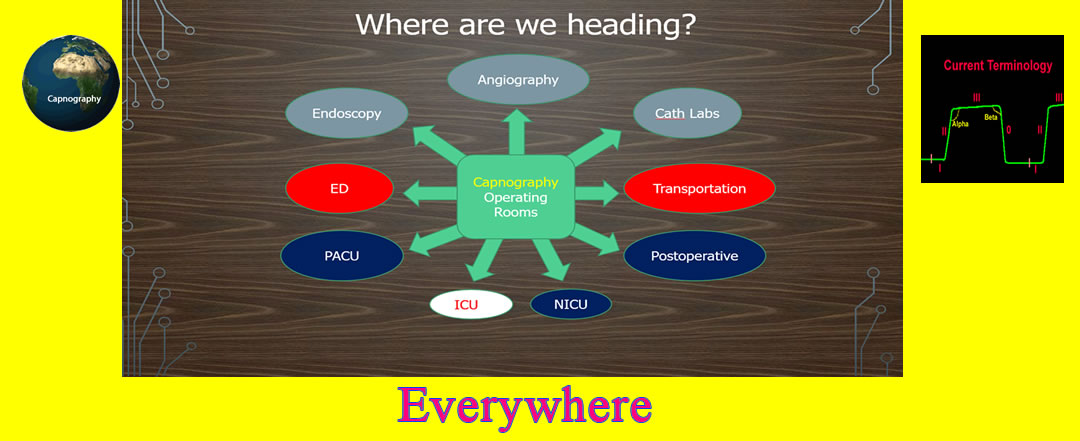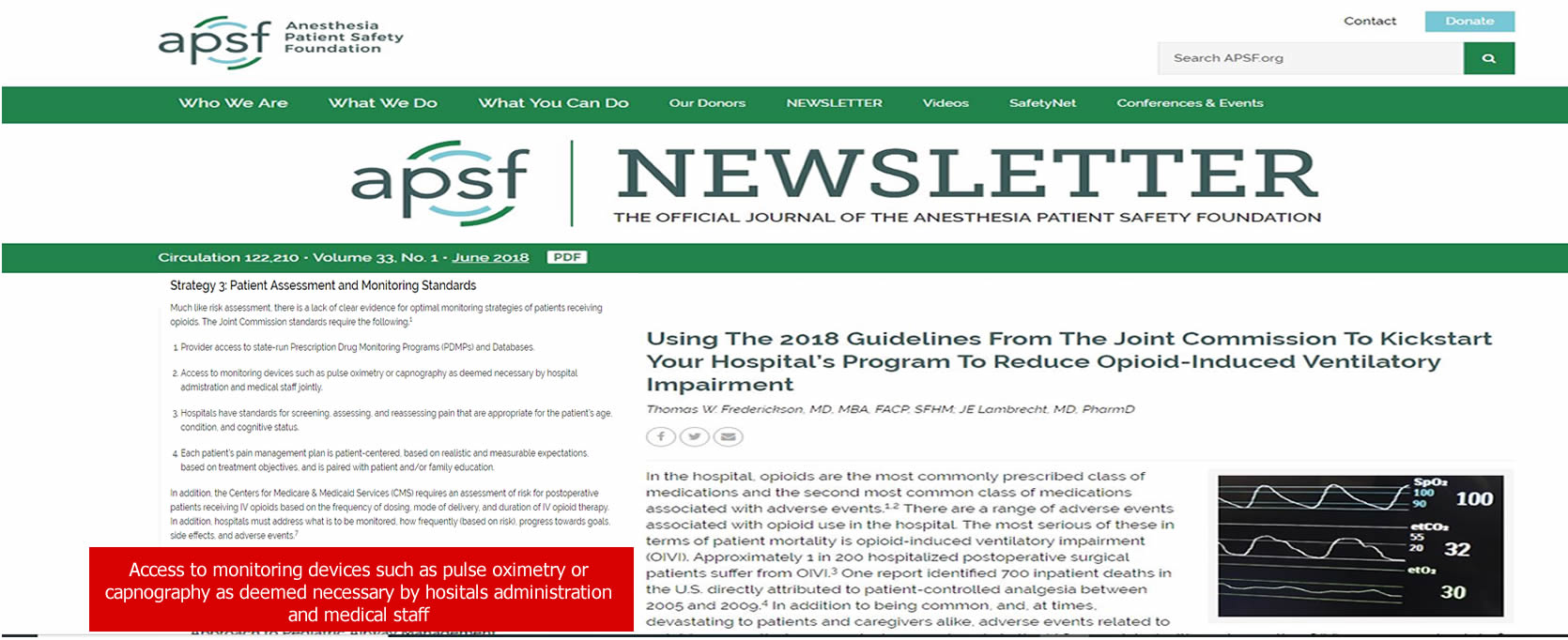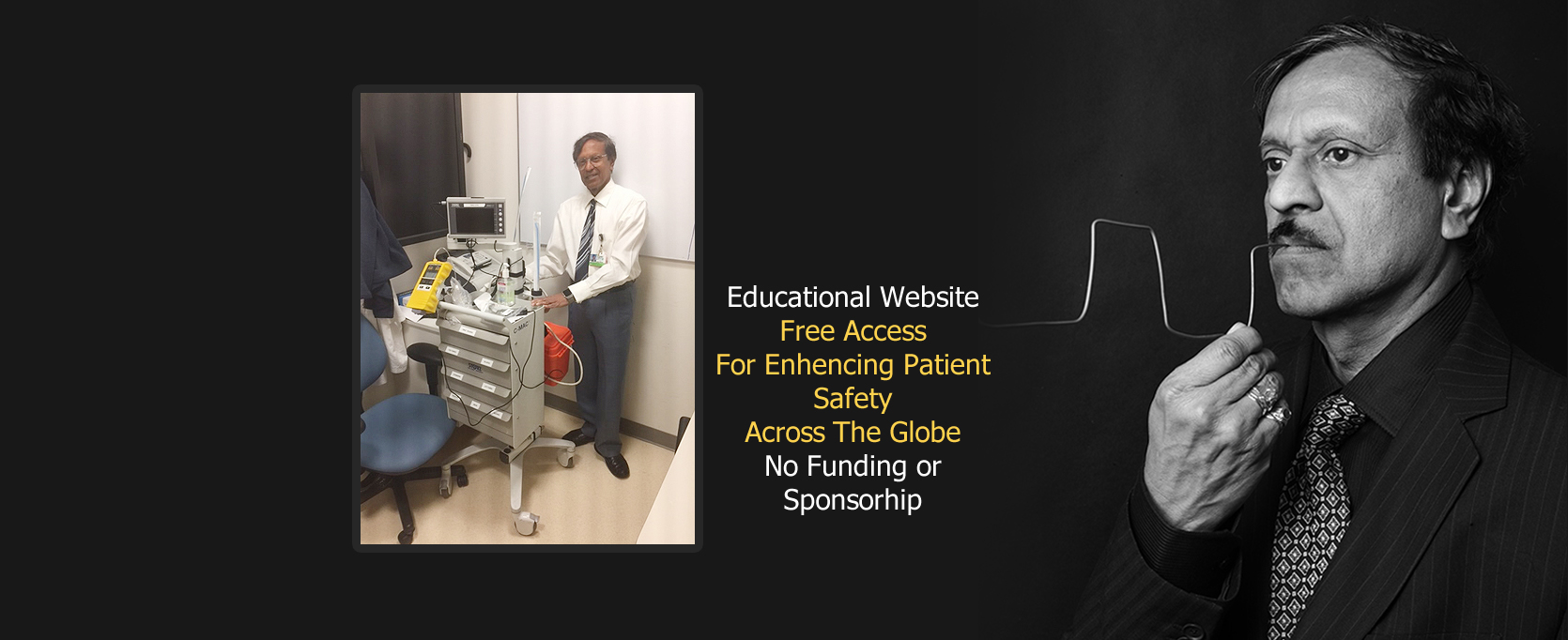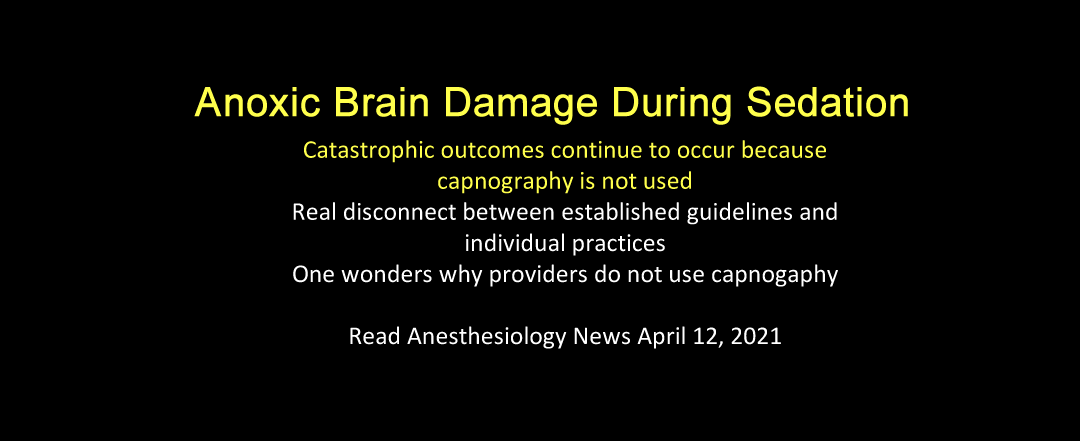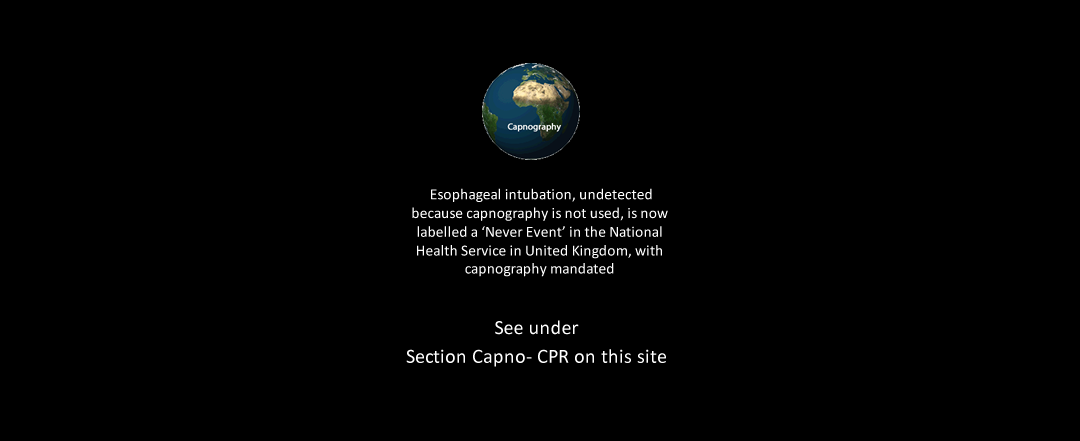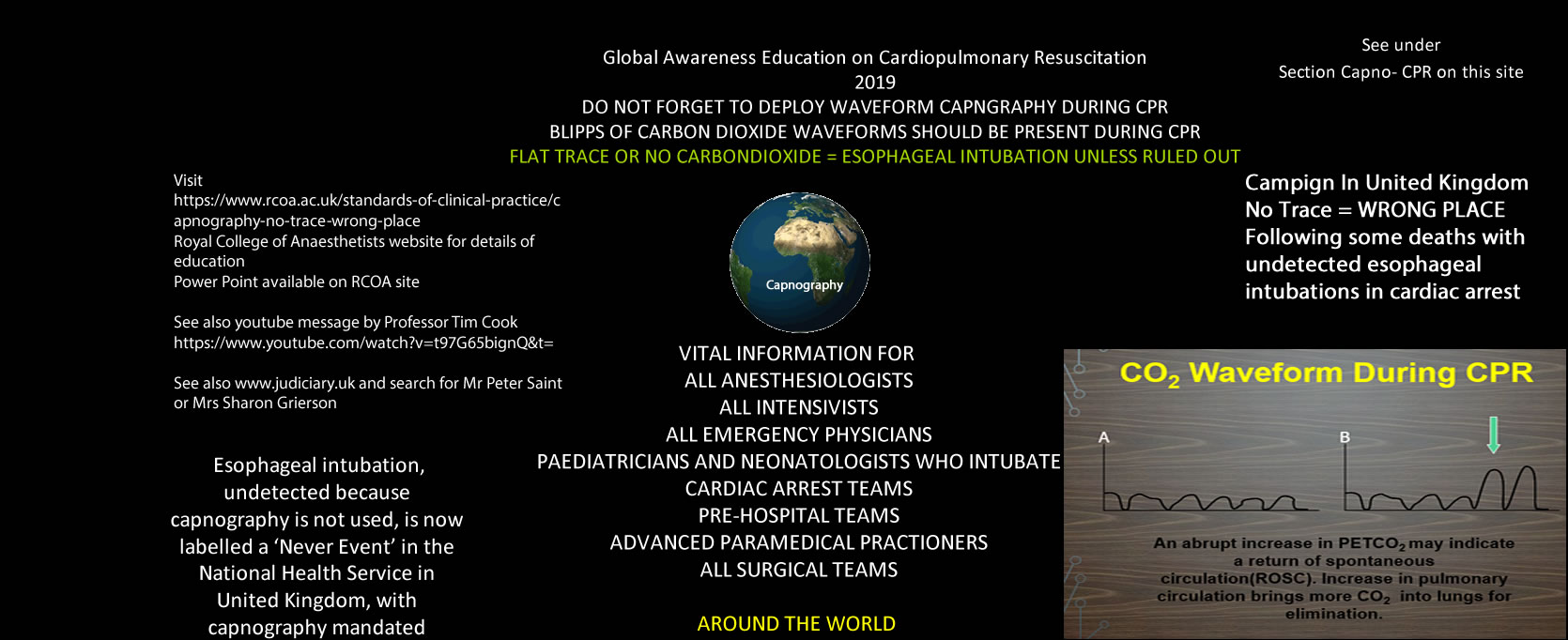Capnography.com for learning capnography
Updated: November, 2023
Capnography is synonymous with patient safety during anesthesia and sedation and a boon during CPR.
Since the introduction of the first infrared CO2 measuring and recording apparatus by Luft in 1943, capnography has evolved into an essential component of standard anesthesia monitoring armamentarium.
The primary goal of anesthesiologists is to prevent hypoxia, and capnography helps to identify situations that can lead to hypoxia if uncorrected. Moreover, it also helps in the swift differential diagnosis of hypoxia before hypoxia leads to irreversible brain damage.
Because of these advantages, the utility of capnography has recently been extended outside of the operating room arena to emergency rooms, endoscopic suites, x-ray rooms, and even to on-site emergency and trauma fields. Therefore, a section for emergency personnel has been included.
The subject matter is divided into several sections. Users can double-click on the area of their choice. Several animations are used to explain underlying concepts. Each unit is also accompanied by ‘highlights’ for quick understanding. A section on ‘Anesthesia breathing systems’ has been recently included. There is also a section called ‘Capnomagic screen’ where several capnograms are arranged by name around a central screen. Placing the mouse cursor over the capnogram title shows the relevant tracing on the main screen. A quiz is included to allow users to gauge their levels of understanding and learning.
The search engine on this site facilitates finding information on topics of interest. It has become a handy feature as the site has grown. Unlike a textbook, this site undergoes frequent updates to reflect current understanding and new concepts of capnography, thus enhancing the breadth and depth of the subject matter. Although capnography evolved from operating rooms, it is currently used by many healthcare providers outside of the operating room to enhance the safety of patients under their care. Today, there is a need to provide specific information on capnography relevant to each specialty (Specialty Applications).
In the last decade, noteworthy changes have occurred, resulting in the broader appreciation of capnography by professions other than anesthesiology. The American Society of Anesthesiologists (ASA) and Association of Anaesthetists of Great Britain and Ireland (AAGBI) require capnography to monitor ventilation during moderate to heavy sedation. In addition, the American Heart Association (AHA) recommends using capnography to judge the effectiveness of chest compression during CPR. These changes have warranted the introduction of new sections and teaching modules within this educational site. American Academy of Pediatrics amended its monitoring guidelines to include capnography during sedation procedures.
The author firmly believes that free capnography education must be available to everyone worldwide. This accessibility to information on capnography not only enhances the safety of patients across the globe but encourages healthcare personnel, engineers, and medical and technical students to create innovations in the field of capnography to enhance the safety of our patients.
Bhavani Shankar Kodali MBBS, MD, FASA
Professor of Anesthesiology, University of Maryland School of Medicine, Baltimore, MD, USA
Ahalya Kodali MD
Saint Louis Children’s Hospital, Washington School of Medicine, Missouri, USA
Dated: July 2023
Dated October 2020
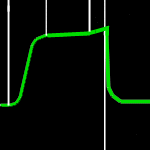



 Twitter
Twitter Youtube
Youtube










